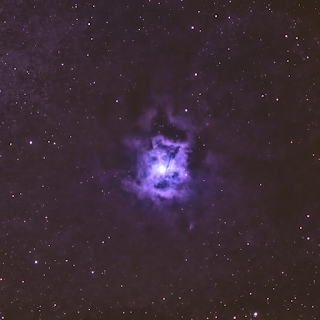My best images taken with my new equipment in 2022
Other than my new mount, I have purchased 2 new filters. Since I am using a monochrome camera (black & white), I use specific filters between the telescope and camera sensor. I use Red, Green and Blue filters to capture and produce an image similar to what the human eye can see, like a normal camera. The other filters I use are Ha (Hydrogen Alpha), OIII (Oxygen III) and, SII (Sulfur II). So if I am taking a normal colored picture I need to take 3 separate exposures. An RGB image uses the 3 coloured filters, Red, Green and, Blue. When I am taking narrow band images using SHO (the Hubble pallet), I use the SII, Ha, and OIII filters. This combination produces enhanced coloured pictures similar to what you've seen from the Hubble Telescope. There are other variations of images using these filters in different combinations. One combination I often use is HOO, not all deep space objects emit SII light. In producing a coloured image, I use Photoshop where I combine the individual images to produce a coloured picture. If it's a standard image I just make Red as Red, Green as Green, and Blue as Blue. If it's a SHO image, I make SII as Red, Ha as Green, and OIII as Blue. A HOO images is Ha as Red, and OIII as Green and Blue. There are other combinations as well.
The reason for using SHO narrow-band filters is to eliminate light pollution in the sky. With the SII, Ha, and OIII gas emissions being so faint they need much longer exposures to become visible. Taking an average RGB image I take a 120-second exposure, and with SHO narrow-band images I take 300-second exposures. The better the filter the better the final picture. Some of the filters I started with produced halos around bright stars, and also allowing unwanted light through than they should, so you end up with a less sharp image. I ended up replacing two filters, the Ha, and OIII. I was getting coloured halos around my stars, which takes allot of time to control in processing.
And Now To The Pictures
IC5070 "The Pelican Nebula" Captured Oct. 2021 using SHO filters.
IC410 "Tadpole Nebula"
This image was captured late Dec. 2021. I used the S H O filters taking 300sec. exposures threw each filter for a total 3 hour exposure.
The Rosette Nebula. Captured Feb. 2022 using Ha, SII, OIII filter combination.
For this image I used the filter combination of Ha, OIII, OIII

















No comments:
Post a Comment